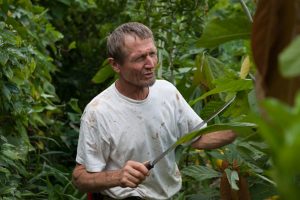A Swiss scientist replants the forest in Brazil
The Brazilian forest is the largest in the world, but also the most damaged. However, a Swiss scientist has found a way to replant trees where nothing could grow anymore.
Brazilian deforestation
The mata atlântica is a large tropical forest in the state of Bahia in Brazil. Before the arrival of Europeans on the continent, it covered 15% of the country’s surface. Exploited for its wood, then burned to create pastures, it has since lost 90% of its surface area. On this burnt land, no one can grow anything.
Mata atlântica is just one example of the effects of deforestation in Brazil. According to Greenpeace, it has reached a record level, with the loss of 3,069 km2 in the first six months of 2020. This is the result of bad habits of monoculture, mechanized and productivity agriculture.
But the forest of Bahia is a source of hope. On a 500-hectare plot of land, nicknamed the “Fazenda of the fugitives from the dry land”, a scientist has recreated a new forest, using very special methods.
The mad scientist from Europe

Ernst Gotsch (agenda gotsch)
Ernst Götsch is a 71-year-old Swiss scientist. In the 1980s, he left his laboratories in Zurich to travel the world and study the functioning of diverse and varied ecosystems. He finally settles in Brazil and buys this Fazenda “from the fugitives of the dry land”. For forty years, he sows and grows a multitude of trees and plants from America, Asia, and Africa.
“We are afraid of mixtures, but our wealth comes from exoticism. »
His method is based on the agroforestry of the ancient Greeks. The latter used trees to protect the vines, providing them with shade and organic matter. Götsch’s “Syntropic Agriculture” applies these principles to a tropical climate, where trees grow faster. The exotic canopy protects the cocoa, banana, and papaya trees. Dead branches and leaves fertilize the soil, attracting insects and fungi into the humus, which enriches the soil.
Forty years after planting the first seeds, the results are there: the rain has returned to the crops, seventeen springs are awakened, the cocoa produced is one of the best in the world.
The Götsch Method has quickly become popular. The scientist travels the world again to share his experience with professionals in the food industry as well as with small farms that suffer from the vagaries of the weather. In England, France, or the Ivory Coast, syntropic agriculture is becoming a plausible alternative to conventional production systems.
Sources: Tiba, believe earth, Greenpeace, agenda Gotsch
Cover photograph: lubasi/ Flikr
Encourage us if you like positives stories!





